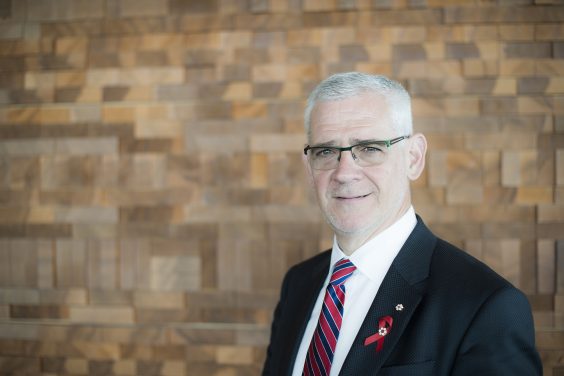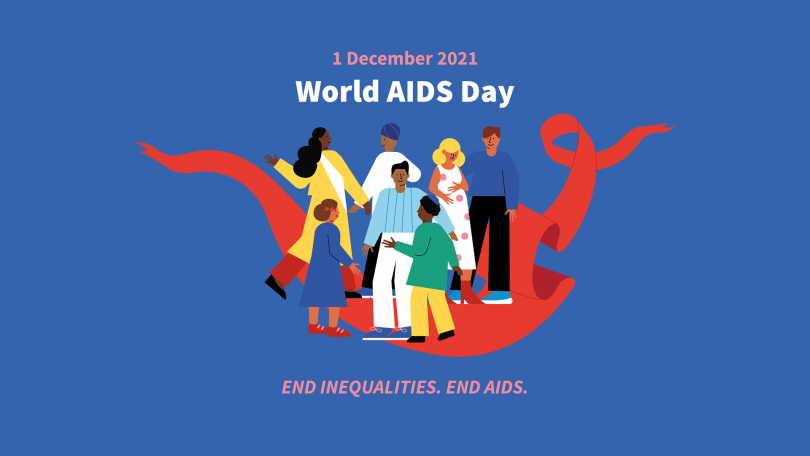By Dr. Julio Montaner, OC, OBC, MD, Executive Director and Physician in Chief, BC Centre for Excellence in HIV/AIDS – Providence Health Care
On December 1st we celebrate World AIDS Day, an opportunity to reflect on our challenges and successes four decades into the battle against HIV/AIDS.
Around the world there are nearly 38 million people living with HIV and about 1.5 million new infections per year. A recent report by the World Health Organization estimates the number of people with the virus being treated with antiretrovirals had risen to 27.5 million – an increase of almost 10 per cent over the last year. Encouraging but not enough.
United Nations target surpassed in BC
In BC, we have much to be proud of given the success of the BC Centre for Excellence in HIV/AIDS’ (BC-CfE) Treatment as Prevention® (TasP®) strategy on the impact of HIV/AIDS, here and globally.
On last year’s World AIDS Day, we were proud to announce, alongside BC’s Minister of Health Adrian Dix, that our province had surpassed the United Nations’ 90-90-90 Target; with 92 per cent of people living with HIV in BC diagnosed, 91 per cent of them on highly active anti-retroviral therapy (HAART), and 95 per cent of those on HAART (approximately 7,500 people) achieving virological suppression, meaning they have undetectable levels of HIV in their blood and bodily fluids.
Reaching these thresholds has played a key role in reducing AIDS related morbidity and mortality in BC by over 90 per cent since the peak of the epidemic in the early ’90s. Furthermore, this success has also greatly reduced the likelihood of new HIV cases in BC, because people living with HIV who are virologically suppressed through HAART do not transmit the HIV virus.

BC’s PrEP program among largest in the world
Since January 2018, BC further expanded its HIV control efforts by adding fully subsidized pre-exposure prophylaxis (PrEP) to the TasP® strategy. PrEP involves one pill (containing two specific antiretroviral drugs) taken daily by individuals who are at increased risk of contracting HIV, based on a set of pre-defined criteria. Daily use of PrEP reduces the risk of acquiring HIV by over 95 per cent.
Today, the BC-CfE’s PrEP program has over 4,700 active participants across all of BC’s health authorities, and is among the largest in Canada and, indeed, the world. As a result of the combined impact of HAART and PrEP, BC is on track to see its lowest number of new HIV infections over three decades in 2021, at approximately 120 cases (a 20 per cent decrease from the previous year).
This proves once again that sustained investments in TasP® (a strategy first proposed by the BC-CfE 15 years ago, and since widely adopted around the world) stops progression of HIV infection to AIDS, avoids premature deaths, and prevents HIV transmission, all within a cost-averting framework.
COVID-19 has impacted HIV care
Continued fostering of BC’s fully subsidized HAART and PrEP programs, with adequate support and full involvement of all relevant stakeholders, will be critical to ensuring the long-term success of BC’s anti-HIV/AIDS strategy. The disruptions created by the COVID-19 pandemic illustrate this point. It has been widely reported that measures needed to address COVID-19, particularly lockdowns early in the epidemic, impacted nearly all aspects of everyday life as well as access to health care services. HIV care was no exception. The BC-CfE documented decreases in laboratory monitoring and access to HAART and PrEP in the first phase of the epidemic. These trends were confirmed with data from a survey of Vancouver’s gay and bisexual men whereby 33 per cent of participants reported avoiding health services because of concerns about COVID-19 exposure. However, prompt implementation of corrective measures allowed for these trends to be reversed within weeks without ill effects.
Earlier this year the United Nations called for a redoubling of the global efforts to “End AIDS as an epidemic by 2030”, defined as decreasing AIDS-related mortality and new HIV infections globally by 90 per cent, using 2010 as the baseline. The campaign was launched in 2015 with a goal of reaching the BC-CfE-proposed 90-90-90 Target by 2020. However, by the end of 2020, most of the world had failed to meet the UN 90-90-90 Target for a variety of reasons, including weak political leadership, insufficient investments, and emerging challenges posed by COVID-19. As a result, UNAIDS estimates the failure to meet the 90-90-90 Target led to an additional one million AIDS-related deaths, and three million new HIV infections globally.
Ending AIDS as an epidemic within reach
Despite these shortcomings, the United Nations successfully challenged the international community to expand the global effort by embracing the 95-95-95 by 2025 Target, as originally proposed by the BC-CfE. UNAIDS estimates that by meeting the 95-95-95 Target the number of people newly infected with HIV will fall from 1.7 million in 2019 to 370,000 by 2025, and the number of people dying from AIDS-related illnesses would be reduced from 690,000 in 2019 to 250,000 in 2025.
“Ending AIDS as an epidemic by 2030” remains within reach. The question remains whether we have the political will and focus to deliver on the promise of the BC-CfE proven Treatment as Prevention® strategy at a global level.
On this World AIDS Day, we encourage every British Columbian to join the BC-CfE as we commit to do our part to motivate our political leaders find the courage and resources to deliver on this promise. Failure to do so would represent an inexcusable failure.
This story was originally published on the BC-CfE website.





